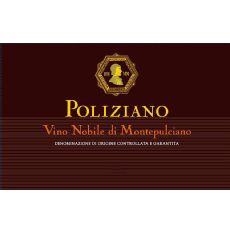Sign In Chef

By using our free meal planner (and the rest of spoonacular.com) you have to agree that you and only you are responsible for anything that happens to you because of something you have read on this site or have bought/cooked/eaten because of this site. After all, the only person who controls what you put in your mouth is you, right?
Spoonacular is a recipe search engine that sources recipes from across the web. We do our best to find recipes suitable for many diets — whether vegetarian, vegan, gluten free, dairy free, etc. — but we cannot guarantee that a recipe's ingredients are safe for your diet. Always read ingredient lists from the original source (follow the link from the "Instructions" field) in case an ingredient has been incorrectly extracted from the original source or has been labeled incorrectly in any way. Moreover, it is important that you always read the labels on every product you buy to see if the product could cause an allergic reaction or if it conflicts with your personal or religious beliefs. If you are still not sure after reading the label, contact the manufacturer.
We also attempt to estimate the cost and calculate the nutritional information for the recipes found on our site. Again, we cannot guarantee the accuracy of this information. Additionally, our nutrition visualizer that suggests that you limit sodium, sugar, etc., and get enough protein, vitamins, and minerals is not intended as medical advice. Similarly, our health tips are based on articles we have read from various sources across the web, and are not based on any medical training. The team behind spoonacular does not possess any medical qualifications and the information may be found to be incorrect or out of date based on future research. If you need help planning your diet or determining which foods (and recipes) are safe for you, contact a registered dietitian, allergist, or another medical professional.
Spoonacular is not responsible for any adverse effects or damages that occur because of your use of the website or any information it provides (e.g. after cooking/consuming a recipe on spoonacular.com or on any of the sites we link to, after reading information from articles or shared via social media, etc.)
×$2.08 per serving

1 likes

Ready in 45 minutes

Spoonacular Score: 2%
You can never have too many main course recipes, so give Zucchini Pizza Boats a try. This recipe serves 6. One portion of this dish contains about 18g of protein, 27g of fat, and a total of 364 calories. For $2.08 per serving, this recipe covers 16% of your daily requirements of vitamins and minerals. A mixture of zucchini, mozzarella cheese, garlic, and a handful of other ingredients are all it takes to make this recipe so flavorful. From preparation to the plate, this recipe takes approximately 45 minutes. This recipe is typical of Mediterranean cuisine. It is brought to you by spoonacular user lise. Users who liked this recipe also liked Zucchini Pizza Boats, Zucchini Pizza Boats, and zucchini pizza boats.
Sangiovese, Shiraz, and Barbera Wine are great choices for Pizza. The best wine for pizza depends on the toppings! Red sauce pizza will call for a red wine with some acidity, such as a barberan or sangiovese. Add pepperoni or sausage and you can go bolder with a syrah. One wine you could try is Poliziano Vino Nobile di Montepulciano. It has 4.4 out of 5 stars and a bottle costs about 25 dollars.
 During the vinification and aging phase, we dedicated the most attentive care to the Prugnolo Gentile (native clone of the Sangiovese variety), black Canaiolo and Mammolo grapes. These come from the vineyards with the best exposure, optimum soil and climatic conditions, so that they
optimize the potential of our Vino Nobile. The result is a structured and long-lasting wine with intense bouquet that recall the richness and warmth of the Tuscan soil.An elegant and structured wine particularly well suited for hearty main dishes and well ripened cheeses.
During the vinification and aging phase, we dedicated the most attentive care to the Prugnolo Gentile (native clone of the Sangiovese variety), black Canaiolo and Mammolo grapes. These come from the vineyards with the best exposure, optimum soil and climatic conditions, so that they
optimize the potential of our Vino Nobile. The result is a structured and long-lasting wine with intense bouquet that recall the richness and warmth of the Tuscan soil.An elegant and structured wine particularly well suited for hearty main dishes and well ripened cheeses.
» Get this wine on Wine.com
























Read the detailed instructions on Foodista.com – The Cooking Encyclopedia Everyone Can Edit